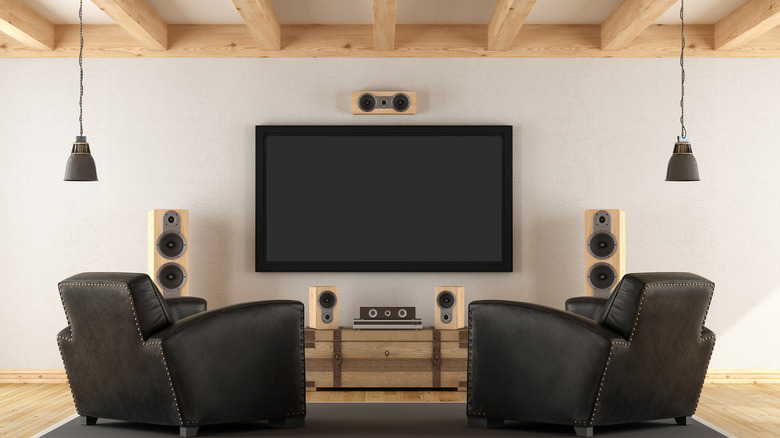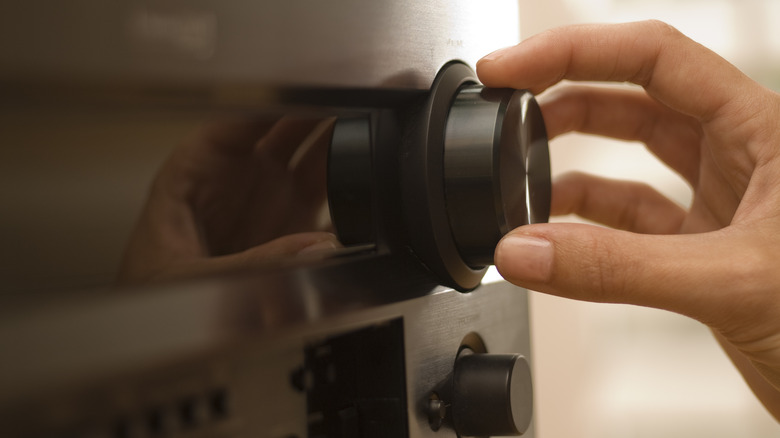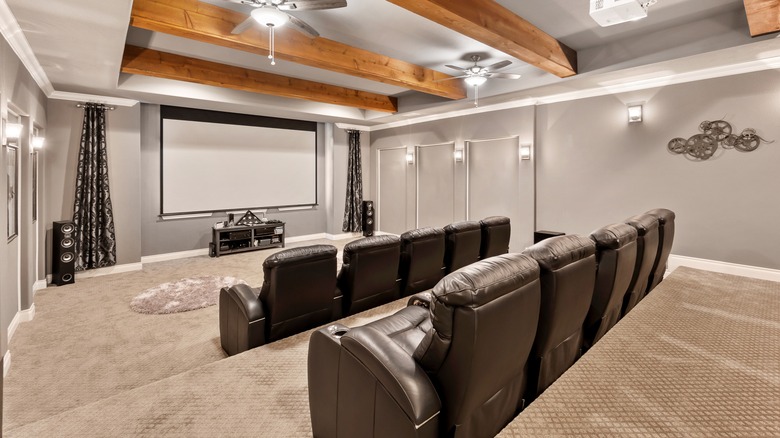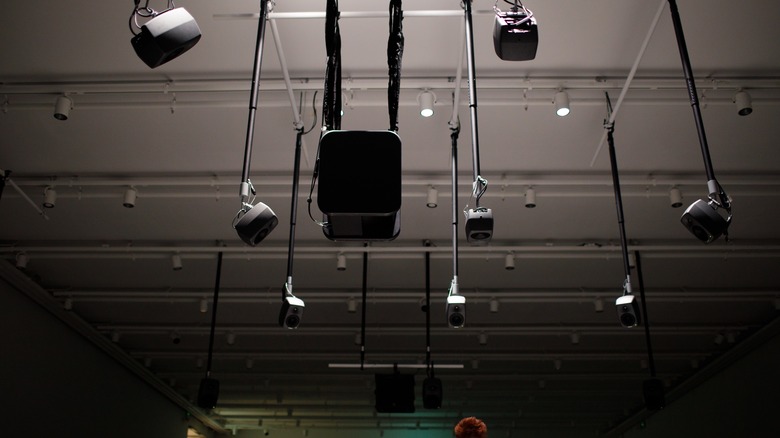Surround Sound 101: What's The Difference Between 5.1, 7.1 & Dolby Atmos Systems?
Everyone knows that upgrading to a nicer TV will give you better viewing quality, whether it's the size of the TV, a 4K format, or something like the OLED and QLED technology. Plus, looking for a new TV is relatively easy since it's just one device. A much more difficult upgrade to look into, however, is a sound system.
If you've got your heart set on acquiring a dedicated sound system to improve the audio of your home entertainment, you'll need to consider your options. That could be a sound bar — although they have their limitations — or a proper surround sound system that replicates what you'd find in a movie theater. Nowadays they are easy to set up, with wireless surround sound systems becoming cheaper and better — and we rated the best ones right here.
The problem is that surround systems aren't very straightforward. Terms like 5.1 and Atmos can confuse buyers, and the different speakers needed can make it very pricey. Still, if you do it right, you will instantly notice the difference and get a better experience — unless you're watching Amazon Prime Video. So here's a guide to what the different surround sound terminology means for you.
5.1 surround
Let's start with 5.1. This is your basic surround sound setup, providing audio from around the room in as close to 160 degrees as possible. The 5.1 system has speakers at the front left, front right, and front center, as well as a second set of left and right speakers to the side of the viewer, called surround speakers, as well as a subwoofer that handles the base.
5.1 sound is already a big improvement over a soundbar and your TV speakers. They deliver an experience closer to a movie theater by engrossing you with immersive sound. The five speakers are also easy to place even in a relatively small living room — here are five of the best home theater systems.
The only downside is that if you have a large living room, these speakers might not be enough. The size of the room can mean the sound doesn't form a surrounding circle but instead goes out to the rest of the room, particularly if you have a big open space behind the seating area.
7.1 sound
After 5.1, the next level of sound fidelity is 7.1 surround sound — first introduced with Disney Pixar's Toy Story 3 in 2010. The 7.1 setup takes the 5.1 system and closes the circle, adding two other speakers identical to the side surround speakers. These are placed to the rear of the viewer. It gives you a deeper listening experience, with the audio able to jump around the system, matching the picture's visual effect, and creating a proper home theater.
Of course, the big drawback of 7.1 is that it's more expensive due to the extra speakers. There's also the problem of space. You will need a big room to have rear speakers. What's more, you need both enough distance and the correct positioning to have speakers sitting directly behind you. Other problems occur with hard objects like chairs and tables in the room, as they will reflect the sound and ruin the purpose of a 7.1 system.
Dolby Atmos
Here it is, the pinnacle of sound, the optimal listening experience. If you can afford this more expensive setup, you'll match the best that movie theaters can offer. Dolby Atmos essentially adds a third dimension of sound to the aforementioned systems, with two to four extra speakers in the ceiling. This allows you to experience planes and helicopters flying above you, cars going from left to right, and the sound surrounding you fully. Dolby Atmos can turn your home into a better private theater than most genuine movie theaters, as only a selection out there has the Atmos system installed.
Of course, the biggest downside to Dolby Atmos is the pricing. There's also the fact that you have to place speakers in the ceiling. Thankfully, this headache of installing Dolby Atmos is getting a fix. And if you aren't keen on Dolby Atmos but still want 3D sound, there are alternatives, like DTS:X.



